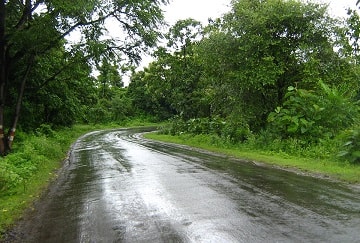
There has been an average 10% decline in summer monsoon (June to September) rainfall over central India between 1950 and 2015 as a result of weakening of the summer monsoon winds.
However, the frequency and intensity of extreme rainfall (more than 150 mm per day for two-three days covering an area of 250 by 250 km) events during the same period over central India (from Gujarat in the west to Odisha and Assam in the east) has been on the rise.
There has been a three-fold increase in widespread extreme events over central India during 1950-2015. In the 1950s, there were two extreme rainfall events per year, while in recent years the number of events has increased to six per year.
Models suggest further increase in extreme events over most parts of the Indian subcontinent by the end of the century.
The weakening of the monsoon winds has resulted in less supply of moisture to the Indian subcontinent.
The warm ocean temperatures in the northern Arabian Sea result in large fluctuations in the monsoon winds leading to occasional surges of increased moisture transport.
These sudden surges of the monsoon winds bring in plenty of moisture and that is what is causing extreme rainfall events across the central Indian belt.
While the central Indian Ocean has warmed up, the Indian peninsular region has not warmed up compared to other regions in the tropics leading to reduced land-sea temperature difference.
Probably the cooling caused by aerosol and the reduced land-sea temperature difference in recent years is what is causing the weakening of the monsoon winds and decline in monsoon rainfall.
At the same time, the northern Arabian Sea is becoming increasingly warm leading to more moist air over the Arabian Sea.
In addition, the northern Arabian Sea gets warmer (1-2 degrees C) 2-3 weeks prior to extreme events. As a result, there is 20-40% more evaporation and increased moisture levels over the Arabian Sea before an extreme event.
This gets transported over central India resulting in extreme rainfall events.
“The Arabian Sea supplies more moisture to the extreme rainfall events than the Bay of Bengal and the central Indian Ocean combined.
The study found that the Arabian Sea contributes 36% of the total moisture to central India, while the Bay of Bengal’s is 26% and the Indian Ocean’s is 9%.
Interestingly, land evotranspiration contributes 29% moisture, which is much more than even the Bay of Bengal. Moisture from land evotranspiration is often neglected in monsoon studies.